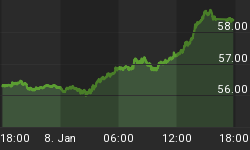When former Asian Development Bank head, Haruhiko Kuroda, was nominated to be the next Bank of Japan Governor on February 27, 2013 he was not shy about stating his intentions: "there is "plenty of room for monetary easing"" (WSJ). And after landing the job as BOJ Chief, Kuroda immediately confirmed that he would do "whatever it takes" to end deflation. Well, a mere two months and a massive new printing scheme later, Kuroda is already on the defensive, arguing that a recent jump in bonds yields is manageable and asset prices are not behaving irrationally.
"There is no sign at this point of excessively bullish expectations in asset markets or in the activities of financial institutions" BOJ Governor Haruhiko Kuroda
Truth be told, the 'excessively bullish expectations' Kuroda is referring to may have already come and gone in the Japanese bond market. To be sure, immediately following the BOJ's pledge to produce 2% inflation via a massive new printing scheme the yield on the 10-year slumped to a record low of 0.315%. Given that no sane individual is happily lending the Japanese government money for 10-years for this miniscule return, it is safe to say that the BOJ's printing scheme - and the speculation it unleashed - precipitated this temporary rush into bonds.

As incredible as 0.315% was, 1.002% was even more remarkable. 1.002% was the intraday high that the 10-year yield hit last week - a level that immediately sparked the BOJ to act in a defensive rather than offensive manner and buy bonds.
Some have argued that the increase in long-term interest rates has occurred because money is favoring foreign bonds and the race-track that is Japanese equities. Fund flows and a surging Nikkei seemed to confirm this (as of the May 23, 2013 the Nikkei was up a whopping 53% in 2013!). However, the dreamy scenario of money leaving Japanese bonds and flying into equities turned into a nightmare last week when the spike in interest rates, along with a worrisome PMI report from China, sparked a 7.3% meltdown in the Nikkei (from intraday high on May 23 to intraday low on May 24 the slump was an even more fantastic -12.3%). Suddenly, the speculation that Japan, the third largest economy in the world, is on the edge of sparking a financial calamity is no longer uttered solely by the fringe.
Japan Changes The Tone
The line between success and catastrophic failure is exceptional thin in Japan. This is the case not only because achieving an inflation rate of 2% without stoking financial bubbles/volatility is a difficult proposition, but also because of Japan's massive debt. As Kyle Bass (see Mauldin's excellent recap) notes, "if JGB interest rates rise 2% in Japan, then the government must pay almost 80% of its revenues (as currently received) just to cover the interest on its debt". Suffice to say, given Japan's debt albatross interest rates can not be permitted to rise all that much, which makes every Kuroda' intervention into the bond market so intense.
Put simply, given it's debt load and inflexible policy options, there is the real risk that Japan's financial markets and economy become so terminally reliant on money printing that confidence in the Yen collapses. And while last week's volatility in Japanese markets may not inspire debt default and/or the end-game exodus from Yen, it did provide a budding contradiction to the good-time QE feelings permeating the financial landscape only a few short weeks ago.
Conclusions
Despite the Eurozone's ongoing sovereign issues and Bernanke's precarious print-fest, Japan is likely to be the first real nightmare for a world increasingly fixated on printing money to try and solve problems. Mired in a multi-decade economic funk that is riddled with failed stimulus policies Japan has been late to the current QE party, but they are now firmly in the lead. That Kuroda and company are already openly defending their printing policies, extending their 2% inflation target from 2 to 3-years, and squabbling with each other does not inspire much confidence that more money printing will make things better (see BOJ Minutes ~ Reuters Recap).
In short, the idea that more debt and money printing somehow always transmutes into lower interest rates is a temporary phenomenon. We are in one of those rare moments in history where fiat money can make markets do funny things (i.e. 0.315%). But as Japan nears the point when seemingly innocuous inflation targeting becomes blatant debt monetization, the tone is threatening to become more serious.
















